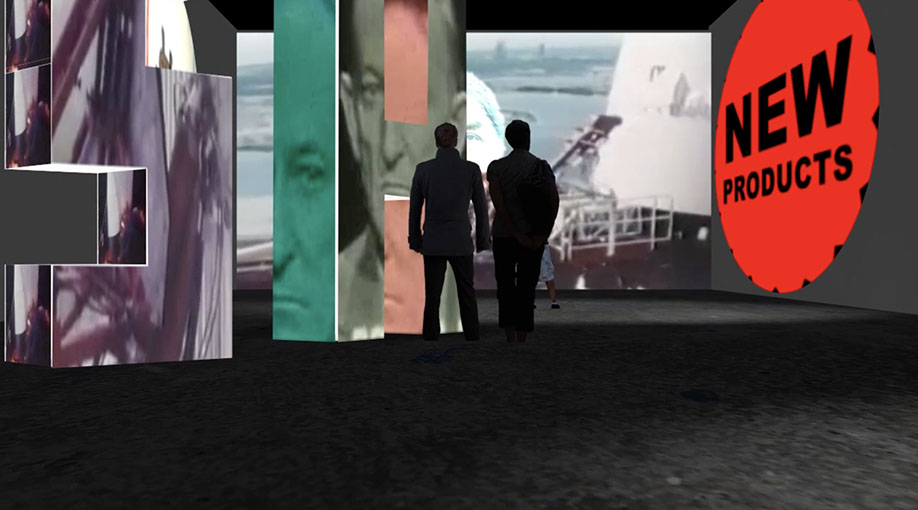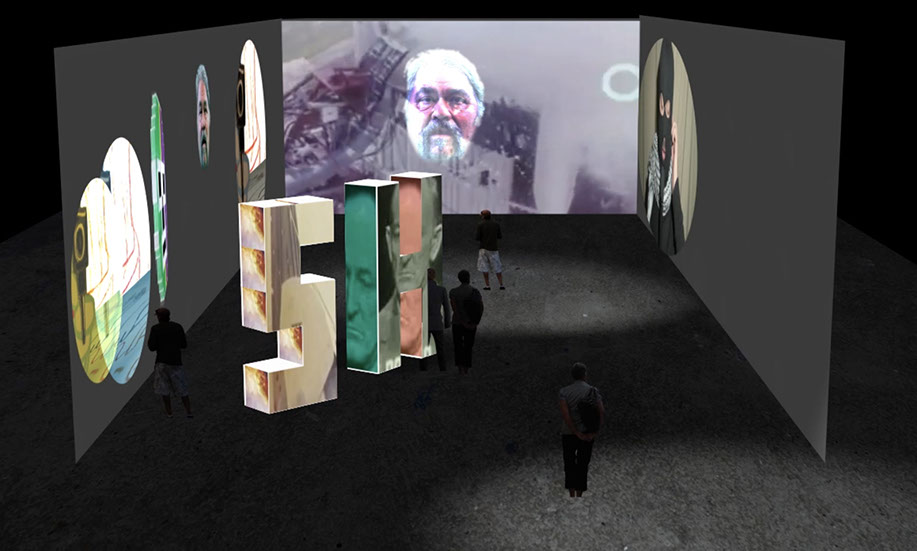PROJECTION MAPPING
2016 has taken me into projection mapping as a visual medium. Currently I am using Mad Mapper to experiment with and design video art installations and visual/audio projects. Some of what is presented on this page are simple experiments projecting video onto geometric shapes in order to understand the basics of projection mapping. Further along I am dealing more with the content of what is being projected rather than how to project it.
The basic concept with mapping is to skew the output of a video projection onto non-regular surfaces. In the image below I have mapped the same video onto a basic cube. If you are not familiar with projection mapping a simple web search will provide you with additional information and examples.

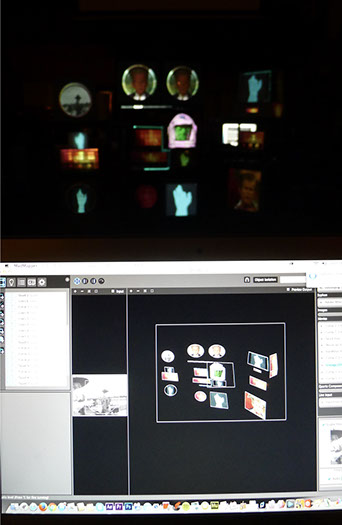
The mapping software allows you to create multiple windows with-in the output of a single or multiple projector fields. These individual outputs can be skewed and warped to conform to the geometry of the objects you are projecting onto. In the image on the left you can my laptop computer screen with the projection in the room beyond. The white bounding box on the computer screen represents the edge on my projector field. As long as I place video with-in that boundary it will be projected. In this example, 18 individual video clips are being projected onto a variety of speaker cabinets and amps. When using multiple projectors I have had upwards of 50 simultaneous video streams playing without lag or stuttering. Obviously it's one thing to map out a space, it becomes very important to have content to project.
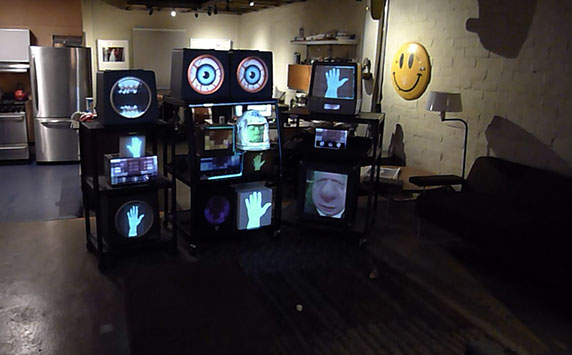
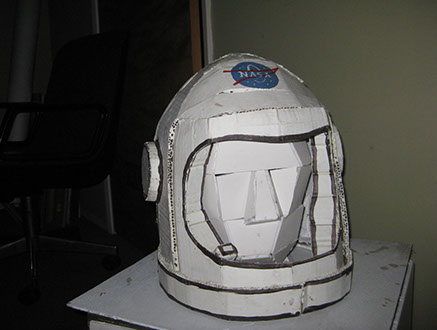
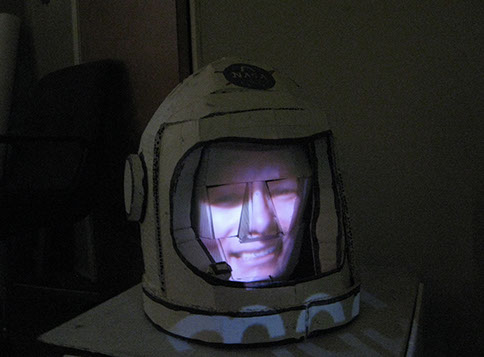
Of course the easiest shape to project onto is a cube. But more complex shapes can be used.
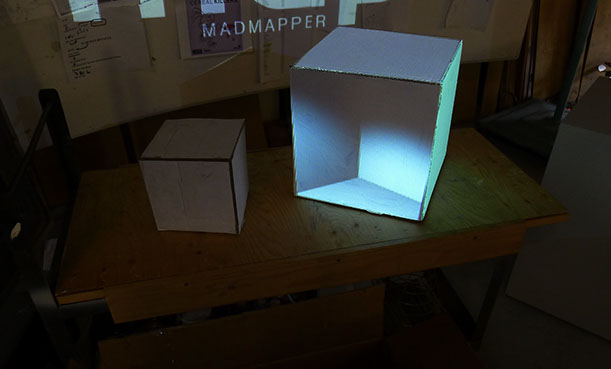
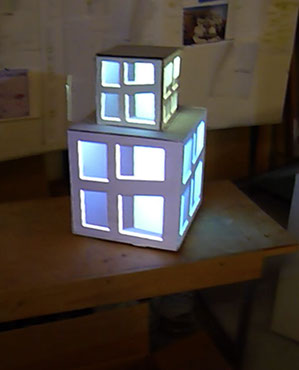
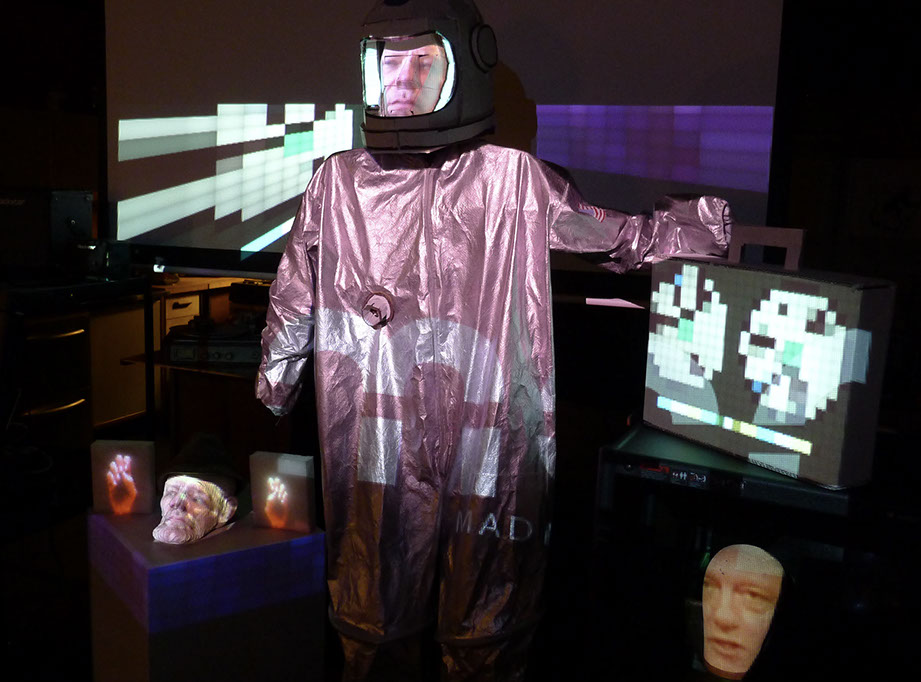
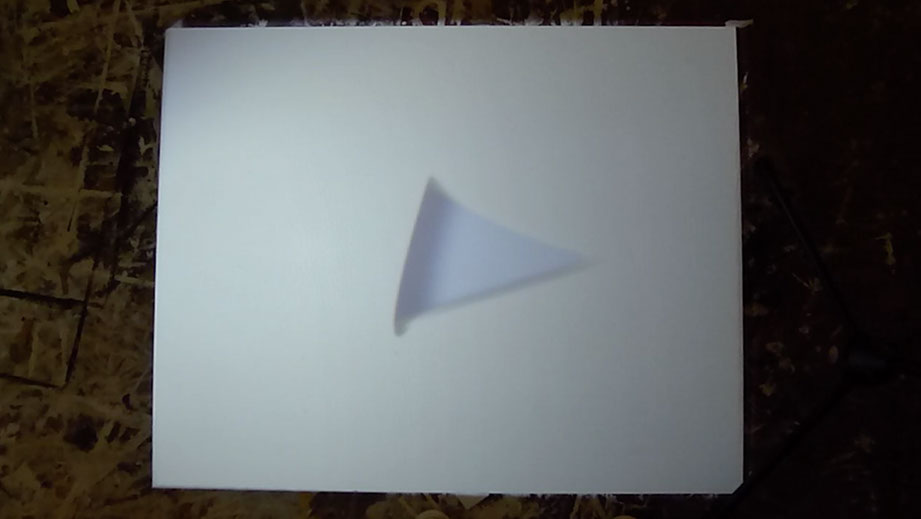
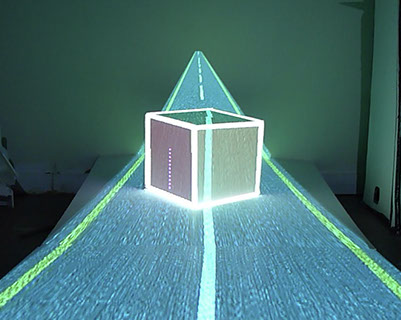
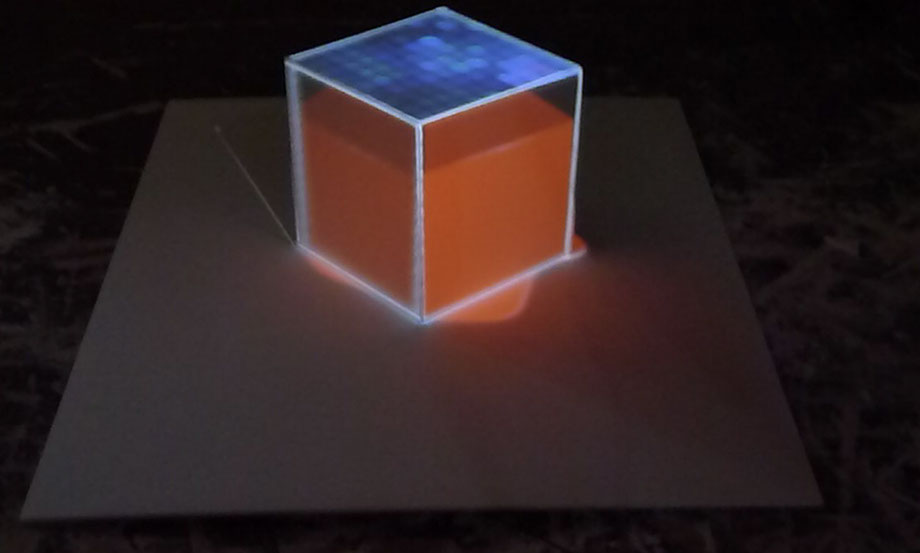
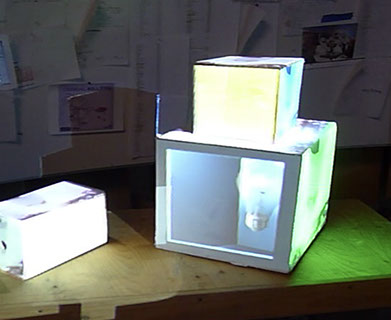

Below: mock-ups for SHYTEGEIST • a multimedia installation incorporating live performance and projection mapping
